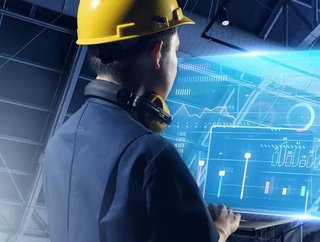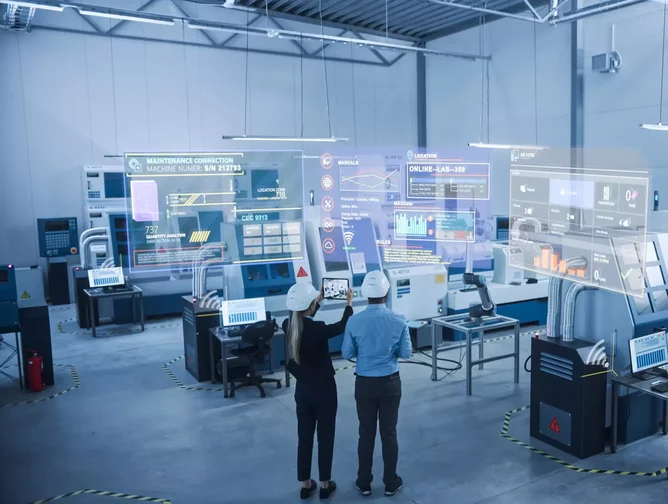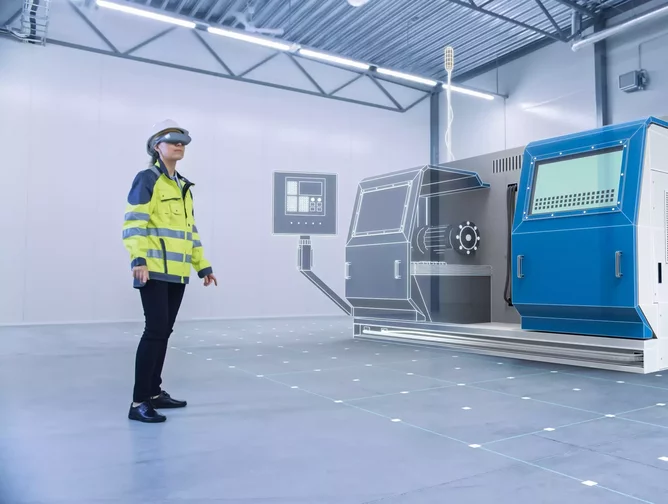Developing Smart Factories of the Future With Digital Twins

Put simply, “a smart factory is a connected factory,” says Simon Keogh, General Manager, Factory Automation at Siemens Digital Industries. “You have complete data flow and integrated workflows from raw material input to finished goods production, and from shop floor to stakeholder coverage.
“The smart factory is really using that connected environment to maximise flexibility, and the productivity of the plant through use of data, through the use of digital twins and a constant optimisation, which in some instances we are talking about self-optimisation - but there is still a way to go to achieve this in most manufacturing environments.”
Digital Twins: A complete Virtual Representation of Your Production Plant, Products and Machines
Providing manufacturers with the capabilities to experience a virtual representation of their production plants or products, “the digital twin is an incredibly important part of a smart factory,” says Keogh. “It enables a manufacturer to overlay in that virtual environment many of the physical attributes that exist in the physical plant. This is really to maximise the simulation to make it as realistic as possible and to enable the optimisation of the most finite capabilities.”

“Digital twins also provide a virtual closed-loop system whereby manufacturers can simulate as much as they possibly can so that when they go into the physical environment, it has been de-risked as much as it possibly can, and the design layout and throughputs have also been optimised.
“Purists will say that it is not a twin until you've got the virtual and the physical representation, but normally the virtual will come first, followed by the physical shortly after. But the ability to feed back real data as the production line or product is being utilised, back into the digital twin enables manufacturers to improve the whole simulation, resulting in a constantly improving environment, whereby the virtual and physical are coming closer and closer together.”
Key Technologies to Advance Smart Factory Capabilities
"I think one of the most important, of course, is the sensors where we are picking up data around the factory. I think it's really critical because it's all about a connected plant, so undoubtedly, open networks and open protocols enable us to achieve this connected plant across many technologies and many different manufacturers. Of course, the automation and robotics layer is also incredibly important in terms of automating production, particularly as resources become scarcer and many of the products become more complex, with much more variety and bespoke solutions," says Simon Keogh, General Manager, Factory Automation at Siemens Digital Industries.
"I think another area is the technologies that are involved in visualisation and analytics. So what we actually do with the data once we've taken it out of the manufacturing plant is turn it into information and insights to make quick business decisions. I think in terms of closing the loop, technologies like cloud and the industrial edge will enable us to utilise technology such as artificial intelligence and machine learning.

"A digital twin can be implemented at many levels of a manufacturer's operations; it can be a digital representation of a machine, a production line, or an entire plant. “However, to achieve a highly optimised and high-performance manufacturing sector, the gains thereafter as a result of good, lean manufacturing practices, I think, will come from the use of digital twins,” says Keogh, who adds that “as space becomes more and more scarce, the ability to optimise plant layouts will be critical, so will the optimisation of the life cycle as the time to market gets shorter and shorter. I believe that these demands will be achieved through an integrated digital twin," adds Keogh.
Implementing a Digital Twin into Your Manufacturing Operations
With many manufacturers starting their digital twins as a 2D or 3D CAD drawing, “it is easy to then take those CAD drawings and then import that into something like our mechatronics concept designer, as an example, and then overlay the physical attributes of that product, machine or plant, and we can start a simulation of it which can range from a simple level to a more detailed level to run ‘what if?’ scenarios, production schedules, and supply and demand. While manufacturers can develop their own digital twins, there are solutions partners and system integrators that can come in an organisation and create digital twins,” says Keogh.
The Next Five Years…
To some degree, digital twins are already in use today. As the industry goes forward, Keogh expects to see the use of the technology expand so that organisations have a much wider coverage of their production facility within a digital twin. “I think we'll see much greater integration between the various stages of design, engineering, development, production, and then through servitization optimization in terms of the product and the production, so I think that integration will happen more. I think we'll start to see lots of people who have been churning out lots of data, and creating data lakes to try and analyse to gain insights, understand that you need to pilot these types of applications and then scale. So I think we'll see much more of that rather than just trying to pour all the data into the cloud,” comments Keogh.

“And I think we will see some more of these innovative technologies such as AI come into manufacturing. I don’t think we have really seen a wide-scale use of 5G as a communications media inside factories yet. But I think we’ll see much faster networks and much more flexible network solutions such as 5G. I think we'll see this happening quicker and quicker. Reflecting on our own development of our own solutions, the speed of it is quite amazing. If I just look over the last two or three years and what's coming, one minute we're talking about a trend, the next minute we've got the technology, and it really is happening at pace. Whereas before, I think people would have looked at five years and gone, ‘yeah, you know, there's going to be a bit of change.’ Now I think there's going to be a significant change.
“It's different in different sectors, of course, aerospace and automotive have always lead the way in the deployment of technology, but I think we'll start to see much greater uptake in other sectors like food and beverage, for instance, and maybe in sectors that have much greater legislation around them, and therefore to some degree, have a bit more conservative approach to their adoption of technologies,” concludes Keogh.
- How Smart Factories are Reshaping the Manufacturing SectorSmart Manufacturing
- Crowe UK: 2024 Manufacturing Outlook Report Explores GrowthProduction & Operations
- Top 10: Chief Manufacturing OfficersProduction & Operations
- Aerospace Insight: Where does Boeing make all of its PlanesProduction & Operations






